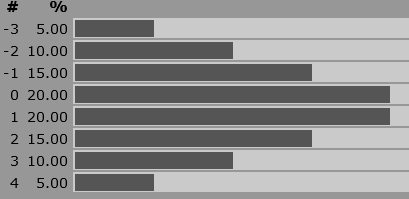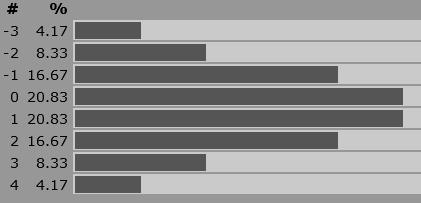I'm making a fork of D&D 5e (based on the SRD but then customized) and one of the changes I'm making is removing the whole score/modifier distinction and just going with a simple "score == modifier" model. That is, ability scores are all in the range [-5,10], with player characters being restricted to the range [-5,5].
Now I'm getting to character creation and want to provide similar ability score generation mechanisms as in the stock game. The "standard array" is simple enough: the set of scores is {2, 2, 1, 1, 0, -1}. But I know the players most likely to play this also like rolled scores. Which means producing a similar generation mechanism to "roll 4d6, keep best 3, 6 times". Which results in a range of [-4, 4] (since you're limited to results between 3 and 18).
Things I've thought of:
- Keep with 4d6k3, but then immediately do the "subtract 10, then cut it in half and round down" procedure. This produces the same result, but adds complexity I'd like to avoid if possible.
- Roll 1d10 and subtract 6. This does mean you can never end up with a +5 (which fits), but also means you can end up with a -5, which doesn't fit. And is a flat distribution, rather than a bell curve.
- Other dice mechanisms that end up isomorphic to the above.
So what I'm looking for is advice on a distribution with the following properties:
- Asymmetric bell curve similar to 4d6k3. If it's slightly different, I don't care. But the asymmetry and "curved" shape are important.
- That outputs numbers in the range [-4, 4] directly or with only very simple operations (a single addition, subtraction, multiplication, or division at most).
- Ideally with a minimum of "reroll this, hold that".




